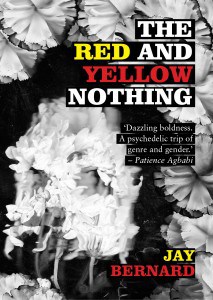Jay does it again and more!
March 2018: Nothing to do with us this time but Jay Bernard has won the Ted Hughes Award for New Work in Poetry (2017) for Surge: Side A. This ‘was performed at the Roundhouse as part of The Last Word Festival 2017, investigating the New Cross Fire of 1981, a defining moment in Black British history that claimed thirteen lives. From the judges: “startling and fresh and unique… a moving and powerful struggle for validation in the Black British community, and the poet’s own clarification of identity. The performances are riveting and the poems are propelled by a strong internal momentum.”’
More at http://poetrysociety.org.uk/wp-content/uploads/2018/03/18-PressRelease-THAWinner.pdf
*****
In March 2017, The Poetry Society announced that Jay Bernard’s The Red and Yellow Nothing had been shortlisted for the Ted Hughes Award for New Work in Poetry (2016). For Ink Sweat & Tears, a webzine with only a few print publications, this was a huge honour and although the eventual winner was Holly McNish’s Nobody Told Me, we can only thank the Poetry Society members who recommended Jay’s pamphlet and THA judges Jo Bell, Bernard O’Donoghue and Kathryn Williams for recognizing the spark in it.
From the judges: ‘This collection is an adventurous pilgrimage through style and form reclaiming medieval myth. It is beautifully paced with a musical momentum and demands to be revisited.’
From judge Kathyrn Williams’ introduction on awards night: ‘The pace and menace of The Red and Yellow Nothing has the horse pace of the ride of the Valkyries. It is time traveling through gender race and genre and is explored through an Arthurian legend – It reads like a song in my head.’
The Arthurian tale of Sir Morien is the story of a young knight described as being “black from head to toe”, who rides to Camelot to find his father.
But what happened before this story began? Jay Bernard’s The Red and Yellow Nothing is a prequel that asks this question, and in the process meditates on the black presence in European art and culture, long before the invention of the divisive racial categories that exist today.
Morien’s story moves across genders, landscapes and centuries with references as diverse as William Dunbar and Kendrick Lamar. Patience Agbabi calls the collection “a psychedelic trip of genre and gender, fizzing with 600 years of wordplay.”
UK Delivery £7.50

